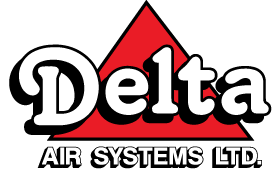 When having your furnace serviced or repaired, it can be difficult to understand what you’re paying for and if you’re receiving good service. At Delta Air Systems we find that if you have a basic understanding of your furnace parts, it helps you optimize your system and service provider’s performance.
When having your furnace serviced or repaired, it can be difficult to understand what you’re paying for and if you’re receiving good service. At Delta Air Systems we find that if you have a basic understanding of your furnace parts, it helps you optimize your system and service provider’s performance.
To help you get a better grasp on our industry, we’ve compiled a list of common furnace parts and short descriptions of their function. Read it over if you want to make sure you’re getting the most for your money:
Blower: Forced air systems have one central point where the air is prepared and then it needs to be distributed throughout your home. This is the part of your furnace that pushes air through the ducts and into your living space.
Blower Chamber: This is the area where all of the heated or cooled air gathers before being distributed throughout your home by the blower.
Blower Motor: The blower motor operates the blower, pushing air through your ducts and into your home.
Burners: This is where your heat comes from. A mixture of air and fuel is burned and the heat created in this process is used to heat the air being distributed into your home. There are many different styles of burners which can change the shape and direction of the flame.
Burner Cover: This is a cover for the burner section of your furnace. It increases efficiency by containing the heat and protects other furnace parts in your system from overheating.
Combustion Chamber: The area containing the air and fuel mixture, burners and ignitor. The heat is created in this section and passed into the heat exchanger.
Damper: A damper is a plate or valve that can be used to control the airflow within your furnace and duct work. It can be used to keep cool or warm air from a particular room, shut off a humidifier for the summer or many other potential regulations that may be needed.
Damper Handle: To block or unblock a passage in your furnace/duct system, you need to slide out or shift the damper and this is where you do it. Some newer models just have a switch instead of a handle.
Exhaust Stack: The heat that is created in the combustion chamber and then passed through the heat exchanger can often contain high amounts of poisonous gas such as carbon monoxide. The exhaust fan moves this safely to the outside of your home.
Flame Sensor: This is used to provide the system with confirmation that the burners are properly lit.
Furnace Switch: This is a switch that controls the power to your furnace. It is often on a wall nearby and can be confused for a light switch. If turned off, it can cause some unnecessary spending on service calls, so make sure you go over our pre-service checklist before you call.
Gas Control Valve: This is a valve on the inside of your furnace used to regulate the amount of gas that can travel to the burners.
Gas Shutoff Valve: This is a valve on the exterior of your furnace on the gas line leading to it. You can use it to completely shut off gas to your system.
Heat Exchanger: After heat is created in the combustion chamber, it passes through the heat exchanger to heat the air that will be passed into your home.
Pilot and Electric or Hot Surface Igniter: This is the starter for whatever is burning the fuel and air mixture in your system.
Register Return: Cool air re-enters the register return and is passed on through the furnace, heated and then pushed out again through the supply duct and register.
Return Duct: This is the ductwork that connects the return register to your furnace. Consider it a cool-air highway.
Supply Duct: This is the ductwork that connects your furnace to the supply register. Consider it a warm-air highway.
Supply Plenum: This is where the cool air initially passes over the heat exchanger and enters into the supply duct.
Supply Register: This is the final point in each room that warm air enters and heats your home in accordance to what your thermostat is set to.
Any furnace parts you still have questions about? Leave us a comment below and we would be happy to explain. Or better yet, contact us today!



